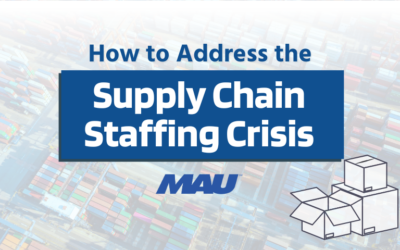The Great Resignation has been plaguing businesses for well over a year now, and even with mounting inflation and instability, it seems unlikely that the trend will disappear any time soon. Voluntary turnover was a problem before 2020 and will remain something business owners must take seriously.
Manufacturers are facing a skills gap that could result in 2.1 million unfilled jobs by 2030, so retaining skilled talent is critical. Maintaining a high retention rate is key to keeping costs down, morale up, and reputation high. Low retention rates can be costly for a number of reasons and can quickly put a business in the red, so it’s essential to understand what the consequence of high turnover looks like and how to mitigate them.
The Root of Retention Issues in 2022
For months, the focus has been on the labor shortage, on businesses scrambling to find qualified candidates to fill millions of vacant roles. Employees are quitting their jobs at record levels, primarily citing lack of work-life balance and growth opportunities as their motivation.
In 2021, voluntary turnover surpassed the previous record of 2.4% (set in January 2001), when the quit rate hit 2.8%. The current record is 3%, first reached in November 2021 and matched in December 2021. Moreover, total quits in the manufacturing sector rose from 345,000 in February to 360,000 in March, a new record and 2.8% of the manufacturing workforce.
A major factor influencing the retention rate is pent-up turnover demand. During the onset of the pandemic, significantly fewer people were quitting their jobs, only 1.9 million people in April 2020. Now that much of the pandemic chaos has ebbed and the job market has opened up, people are resuming the job searches they had put off. And with many companies offering higher pay and superior benefits than ever before, there’s never been a better time to make a major career move
Soft Costs and Retention
But first, what are “Soft Costs”?
While typically used within the construction industry, “Soft Costs’” refer to business costs that are not involved in the direct process of a business operation. While essential, these costs generally focus on “ancillary issues that do not affect the day-to-day production process.”
Some examples of general soft costs include:
- Expenses related to the sales and marketing efforts
- Taxes
- Insurance premiums the business pays its providers
- Liability Coverage
What are some of the Soft Costs Associated with Turnover?
Every business leader knows that the hiring process is not cheap and becomes even more expensive when factoring in potential turnover costs. It’s estimated that losing an employee can cost 1.5-2 times the employee’s salary. For hourly workers, it costs an average of $1,500 per employee. For technical positions, the cost jumps to 100-150 percent of the salary. At the high end, C-suite turnover can cost 213 percent of salary.
It is estimated that employee turnover costs employers about 33% of an employee’s annual salary to find and hire a replacement. This cost comes from factors such as:
- Hiring costs include advertising, screening, and interviewing
- Onboarding costs
- Costs of lost productivity
- Cost of errors made by new inexperienced employees
- Training costs
- Cost of wages for employees or supervisors to work extra shifts
- Cost to conduct a background check
- Number of days the position stays open
It’s estimated that two-thirds of all sunk costs due to turnover are intangible, including lost productivity and knowledge, which are part of the cost-of-vacancy calculation.
With turnover at an all-time high, these costs can quickly become out of control and inflict serious harm to your business’s overall productivity and culture, and bottom line. By reducing turnover and boosting retention, your business can significantly lower these soft costs and preserve culture and morale. Reducing these soft costs as much as possible will help divert some savings towards investing in existing talents and your hiring process, creating long-lasting stability and growth.
How Can MAU Help?
The good news: 75 percent of turnover cases are preventable
Multiple factors are involved in reducing the employee turnover your company has. MAU’s experts can help your business take the essential first steps to combat employee turnover: re-evaluating and updating the existing hiring process, prioritizing flexibility, and ensuring your compensation and benefits remain competitive.
Tackling turnover starts with finding an experienced, trustworthy staffing partner. They will be able to find great employees who will perform well and stay at your company for years to come.
To learn more about how MAU can support your business’s workforce needs, check out our blog on the Flexible Workforce Model!





